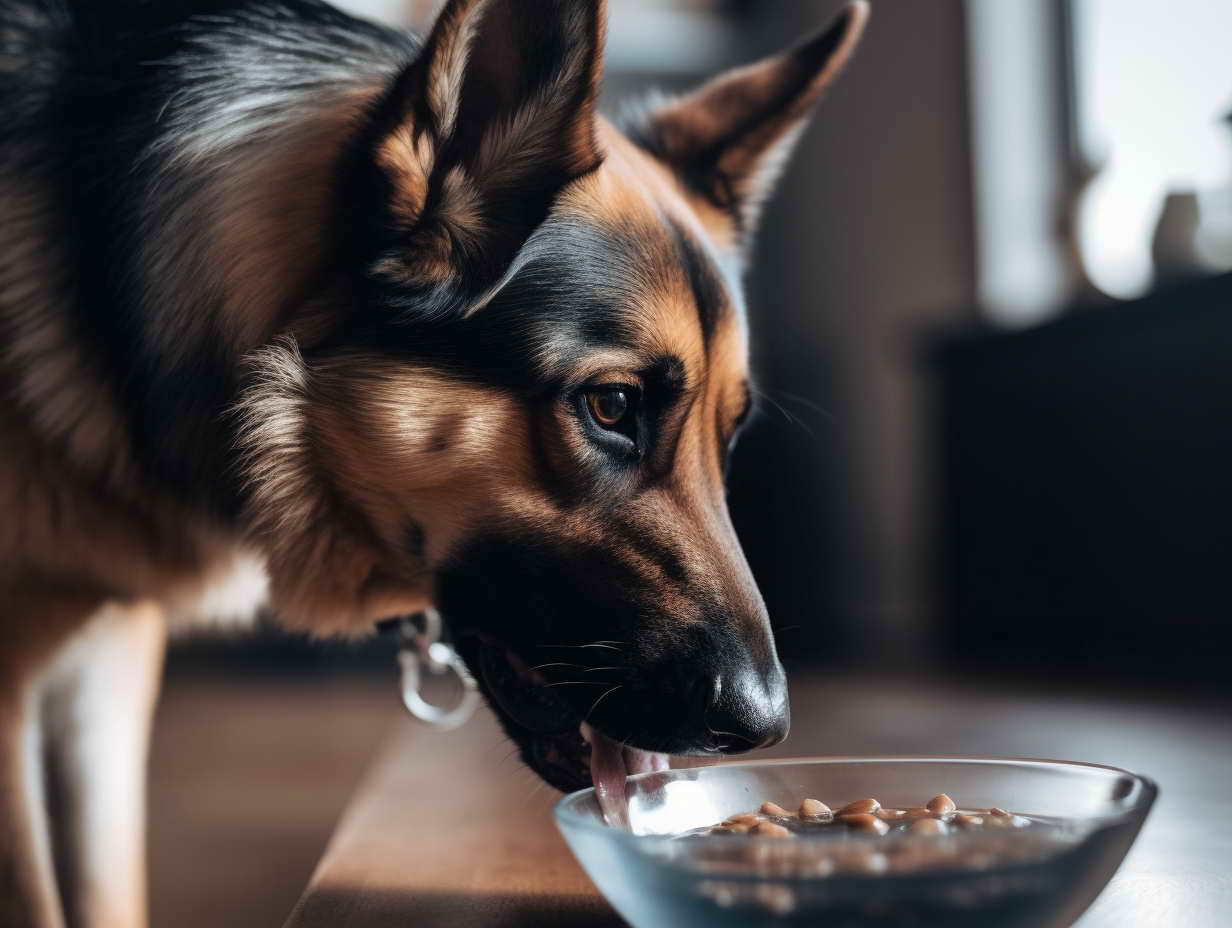Is It OK to Change Flavors Of Dog Food: A Comprehensive Guide
Introduction
Changing your dog’s food flavor can be a confusing decision. Is it safe? Will it upset their stomach? In this comprehensive guide, we’ll explore the topic of changing flavors of dog food. We’ll cover the dos and don’ts, benefits, and potential pitfalls, all backed by expert insights and real-life experiences.
Is It OK to Change the Flavors of Dog Food?
Changing flavors of dog food is a topic that concerns many pet owners. We all want the best for our furry companions, and their diet plays a crucial role in their overall health and happiness. In this section, we will dive deeper into the considerations and best practices when contemplating a change in your dog’s food flavors.
The Importance of Variety
Dogs, like humans, appreciate a bit of variety in their meals. Imagine eating the same meal every day for weeks or months; it would become monotonous and potentially less enjoyable. The same principle applies to our four-legged friends. Offering different flavors of dog food can make mealtime more exciting for them.
Variety in flavors can stimulate your dog’s taste buds and keep them engaged with their food. This not only prevents mealtime boredom but also encourages them to eat enthusiastically, ensuring they receive the necessary nutrients for their well-being.
However, while variety is beneficial, abrupt changes in your dog’s diet can lead to digestive issues. To avoid these problems, it’s essential to approach flavor changes with a gradual transition strategy.
Gradual Transition
One of the key factors to consider when changing your dog’s food flavor is the importance of a gradual transition. Dogs have sensitive digestive systems, and sudden shifts in their diet can lead to upset stomachs, diarrhea, or vomiting.
To ensure a smooth transition, follow these steps:
- Mix the Old and New: Start by mixing a small portion of the new flavor with your dog’s current food. Initially, this should only make up a small percentage of the meal, around 10% of the total portion.
- Increase Gradually: Over a week or two, gradually increase the proportion of the new flavor while decreasing the old one. This gradual shift allows your dog’s digestive system to adapt to the new food without causing undue stress.
- Observe Closely: Throughout the transition, keep a close eye on your dog. Watch for any signs of discomfort, such as changes in stool consistency or vomiting. If you notice any issues, slow down the transition process or consult your veterinarian for guidance.
By following this gradual transition method, you can minimize the risk of digestive upset and make the flavor change a positive experience for your dog.
Signs of Trouble
Despite your best efforts, dogs can react differently to changes in their diet. It’s crucial to be vigilant during the transition period and watch for signs of trouble. These signs may include:
- Diarrhea: Loose or watery stools can indicate that your dog’s digestive system is struggling to adapt to the new flavor.
- Vomiting: Repeated vomiting, especially after eating the new food, can be a cause for concern.
- Refusal to Eat: If your dog consistently refuses to eat the new flavor or shows a sudden loss of appetite, it’s a red flag.
If you observe any of these signs or if your dog seems distressed during the transition, it’s essential to seek advice from your veterinarian promptly. They can guide how to address the issue and may recommend specific dietary options that suit your dog’s needs.

Benefits of Changing Dog Food Flavors
Changing flavors can have several benefits for your dog’s overall health and well-being.
Nutritional Variety
Different flavors often come with varying nutrient profiles. By rotating flavors, you can provide a more balanced diet, ensuring your dog gets a wide range of essential nutrients.
Avoiding Allergies
Some dogs may develop food allergies or sensitivities if exposed to the same flavor for an extended period. Changing flavors can help prevent this issue.
Enhanced Palatability
Novel flavors can excite your dog’s taste buds, making mealtime a joyful experience. This is especially helpful for picky eaters.
Precautions to Take
While changing flavors can be beneficial, it’s essential to take precautions to ensure your dog’s health.
Consult Your Vet
Before making any dietary changes, consult your veterinarian. They can provide personalized advice based on your dog’s specific needs.
Quality Matters
Stick to reputable dog food brands that offer a variety of flavors. Ensure the new flavor is of the same high quality as the old one.
Monitor Your Dog
Keep a close eye on your dog during the transition period. Any adverse reactions should be addressed promptly.
Frequently Asked Questions
Can I change my dog’s food flavor suddenly?
While gradual transitions are recommended, some dogs may tolerate abrupt changes better than others. It’s best to consult your vet for guidance.
How often should I change my dog’s food flavor?
Every dog is different. Some may benefit from a change every few months, while others may prefer consistency. Pay attention to your dog’s preferences and consult your vet.
What if my dog refuses to eat the new flavor?
Try mixing the new flavor with the old one gradually. If your dog continues to refuse, consult your vet to rule out underlying health issues.
Are homemade dog food recipes a good alternative to commercial flavors?
Homemade recipes can be a great option, but they must be carefully balanced to meet your dog’s nutritional needs. Consult your vet or a canine nutritionist for guidance.
Can changing flavors help with my dog’s weight management?
Yes, switching flavors can prevent weight gain by offering variety and preventing excessive consumption of one flavor.
Is it safe to switch to raw food suddenly?
Transitioning to a raw food diet should be done gradually under the guidance of a vet or a pet nutritionist to ensure a balanced diet.
Conclusion
In conclusion, changing flavors of dog food can be a healthy and exciting choice for your furry friend. However, it should be done with care, ensuring a gradual transition and monitoring for any adverse reactions. Always consult your vet for personalized advice, and remember that variety can lead to a happier and healthier dog.

Leave a Reply